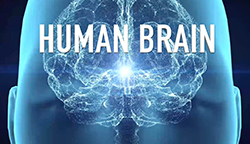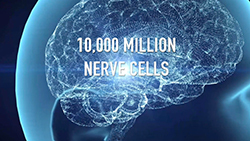
Why Our Children Need Help to Build Character?
Our children need help growing through childhood. Did you know the brain is only about 80% developed in teens, making it no surprise that rational decisions can be hard to come by for adolescents. Development of a mature thought process takes time.
 Research during the last decade fueled by technology, relying on magnetic resonance imaging, revealed young brains have fast-growing synapses and sections that remain detached until the mid 20s. Leaving teens open to influences from the environment. These changes in the brain leave the teenager prone to impulsive behavior. This occurs even without the surge of hormones and genetic predispositions.
Research during the last decade fueled by technology, relying on magnetic resonance imaging, revealed young brains have fast-growing synapses and sections that remain detached until the mid 20s. Leaving teens open to influences from the environment. These changes in the brain leave the teenager prone to impulsive behavior. This occurs even without the surge of hormones and genetic predispositions.
The prefrontal cortex (PFC) in the teen’s brain is undeveloped and improperly balanced as it relates to the emotional part of the brain, thus unable to make rational decisions. For the teen, most decisions are fueled by emotion and what “feels good”. These findings on the adolescent brain go a long way in explaining why teenagers are so susceptible to peer pressure.
Neuroscience proves that the frontal cortex determines the quality of judgment, self-control, and sensible planning of the brain, develops slowly throughout teenage adolescence. When not fully matured, the frontal cortex is physically unable to make rational and disciplined decisions alongside the emotional portion of the brain.
 Puberty is the beginning of major changes in the limbic system.
Puberty is the beginning of major changes in the limbic system.
Part of the limbic system, the amygdala is thought to connect sensory information to emotional responses. Its development, along with hormonal changes, may give rise to newly intense experiences of rage, fear, aggression including towards oneself.
Self-harm behaviors are considered abnormal and in the United States alone there are approximately two million cases documented each year. These behaviors include cutting, self-strangulation, branding, burning, and other extreme self-inflicted injuries. Teens hurt themselves “as a form of stress management or self punishment when feeling overwhelmed.

Self-harm behaviors, when exposed to stress and feelings of helplessness, is more common in teens than most people know. Many teens who self-harm, inform doctors they learned the techniques from friends or the Internet. The study noted that 12 to 37 percent of teens during early adolescence “cut”, self-inflicting scratches and lacerations. Females tend to make up 60 percent of people who participate in self-harming behaviors. Close to 50 percent of people who engage in mutilation practices tend to begin at the age of 14 and may continue until their 20’s.
“What a teen does and is exposed to during this critical time in life, has a large influence on the teen’s future, because experience and current needs shape the pruning and sprouting process in the brain.”
Dr. Robert Hedaya
The National Institute of Health, Doctor Robert Hedaya, Clinical Professor of Psychiatry at the Georgetown University Hospital and Founder of the National Center for Whole Psychiatry, Frances E. Jensen, Professor of Neurology, David K. Urion, Associate Professor of Neurology from Harvard Medical School. Sara Johnson, Ass. Professor at Johns Hopkins Bloomberg School of Public Health, Dr. Stuard Goldman, co-director of the Mood Disorder Program at Children’s Hospital Boston, Whitlock J (2010) Self-Injurious Behavior in Adolescents. PLoS Med 7(5): e1000240. https://doi.org/10.1371/journal.pmed.1000240, Sheryl Feinstein, author of “Inside the Teenage Brain: Parenting a Work in Progress” (Rowman and Littlefield, 2009).
https://thriving.childrenshospital.org/study-shows-cutting-prevalent-among-young-teens/
http://journals.plos.org/plosmedicine/article?id=10.1371/journal.pmed.1000240
https://harvardmagazine.com/2008/09/the-teen-brain.html
https://www.teensafe.com/blog/journey-to-the-center-of-the-teenage-psyche/
https://www.healthyplace.com/abuse/self-injury/self-injury-self-harm-statistics-and-facts/
https://www.livescience.com/21461-teen-brain-adolescence-facts.html
